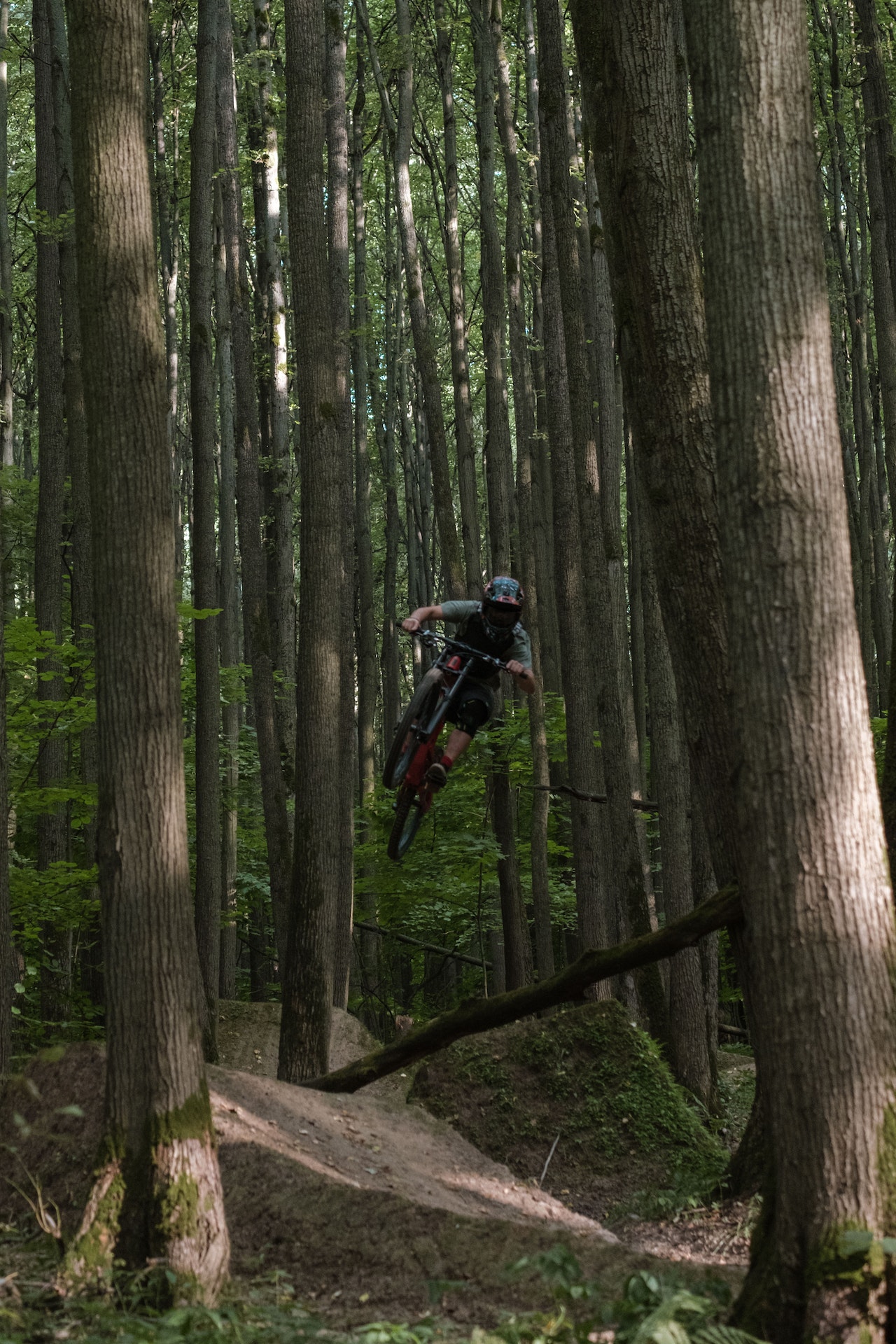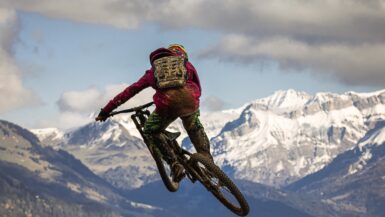Mountain bike racing is a growing sport that is both exciting and rewarding. But, to perform your best on the racecourse, you need to do more than show up on the day of the race. Training is vital to success in this high-intensity sport, and with the right training plan, you can take your racing skills to the next level. This article will discuss mountain bike race training fundamentals, how to design a personal training program tailored to your goals and abilities, and the importance of rest and recovery. Read on to learn how to train for mountain bike racing and set yourself up for success.
Gear Considerations
Mountain biking is physically demanding, so proper body conditioning is essential for optimal performance. Before you begin training:
- Consult a doctor and create a tailored exercise and nutrition plan.
- Establish a cardiovascular exercise and strength training routine, and include rest and recovery in your schedule.
- Practice the skills you need for mountain bike racing, such as proper cornering, jumping, and climbing.
Choose the Right Gear
Having the right gear is critical for success in mountain bike racing. Make sure your bike is appropriately fitted to your body and suitable for the kind of racing you’re doing. Consider investing in a full-suspension mountain bike for increased control and comfort. Also, look for lightweight racing tires that provide ample grip and lightweight shoes and apparel that keep you cool and dry. In addition, think about investing in a quality helmet and other protective gear, such as knee and elbow pads.
Join a Racing Team
Training on your own can be daunting, so consider joining a mountain bike racing team or club. You’ll be able to train and race with experienced riders who can help you improve your skills and gain insight into the sport. You may even practice with professional racers who can advise on race preparation, conditioning, and strategy.
Prepare Your Mind
Riding a mountain bike at a race pace can be challenging, so mental preparation is just as necessary as physical conditioning. Visualize yourself conquering difficult sections of the course and practice positive self-talk. Set realistic goals and focus on the task rather than the outcome. Learn to embrace the challenge of mountain bike racing and enjoy the ride!
Strength and Endurance Training
Mountain bike racing requires strength and endurance, so it is essential to know how to train for it in the best way. Strength training should be incorporated into your overall training program to help you build the muscular strength needed for mountain biking. Strength training exercises such as pull-ups, push-ups, squats, and burpees can help you to make strength in your upper and lower body muscles, which will help you to be able to cycle up steep hills with ease. There are also other variations of strength training exercises that can be used to target specific muscles needed for mountain biking.
Increasing Strength Endurance
In addition to building strength, endurance training is crucial for mountain bike racing. This will help you to be able to ride long distances without getting tired too quickly. The most effective way to increase strength endurance is through interval training. This training consists of alternating between high-intensity and low-intensity exercises, with high-intensity activities lasting longer than low-intensity exercises. High-intensity exercises such as sprints, hill climbs, and interval jumps can help to build power and strength. Low-intensity exercises such as jogging, cycling, and swimming can also help to increase your aerobic capacity and endurance.
Incorporating Endurance and Strength Training Into Your Program
When incorporating strength and endurance training into your program, it is essential to remember to start slowly and gradually increase the intensity of your workouts as you become fitter. Taking good rest days between training sessions is vital to ensure that your muscles have time to recover and build. By incorporating strength and endurance into your overall training program, you can make the muscles and endurance you need to become a successful mountain biker.
Skill-Specific Exercises
Strength training exercises are essential for mountain bike racers. It helps improve endurance, reduce fatigue, and build a stronger core. Mountain bikers can do several strength training exercises to maximize their performance. Examples of strength training exercises include bodyweight exercises such as push-ups, squats, lunges, weight machines, and core exercises such as planks or sit-ups. Increasing resistance and repetitions will help you build strength and improve your mountain bike racing skills.
Flexibility Training
Flexibility training is another vital part of mountain bike racing training. Stretches and yoga exercises can help increase flexibility and improve your range of motion. This will help you perform better and reduce the risk of injury. Examples of flexibility training exercises include hamstring stretches, chest stretches, and hip flexor stretches. Try to spend at least 10 minutes per day stretching specific muscle groups.
Cardio and Interval Training
Cardio and interval training can help improve your endurance and speed while mountain biking. Cardio exercises such as running, cycling, swimming, or rowing can help build endurance and increase your heart rate. Interval training is a more intense form of cardio where you increase and decrease the intensity of the exercise. This can help you improve your speed, power, and endurance.
Mountain Bike Specific Exercises
Mountain bikers need to be familiar with the terrain they will be riding on and practice specific mountain bike skills. Beginner riders should start by practicing basic skills such as balance and shifting. As you get more experienced, you can add more complex skills, such as bunny hopping and navigating technical terrain. You can practice mountain bike-specific exercises off the trail, such as sprints and drills on flat surfaces. You can also ride the same landscape to practice your skills and improve your riding.
Rest and Recovery
Rest and recovery are essential parts of any training program. It is important to schedule time for rest and recovery to avoid injury and burnout. Make sure to get enough sleep, eat healthy and nutritious meals, and take time to relax. This will help ensure you are ready to tackle the next mountain bike race.
Mental Preparation
Achieving success in mountain bike racing starts with setting some specific, achievable goals to work towards. Setting both short-term and long-term goals that are realistic and achievable based on your current fitness level, skill level, and experience is essential. Short-term goals would be specific milestones you can achieve within a month or two, such as increasing your average speed on a particular course or improving your overall power on rolling terrain. Long-term goals are more ambitious and life-changing, such as completing a multi-day stage race or becoming a professional mountain bike racer.
Prioritize Training
Once your goals are set, you must prioritize your training to achieve them. Spending time on all aspects of your fitness, including strength, endurance, speed, and flexibility, is essential. Make sure to build in rest days and recovery weeks, as these are equally important for progress. Additionally, ensuring that you are adequately fueled and hydrated before, during, and after your rides is vital.
Train Smart
Innovative training means focusing on the specific skills and abilities required for mountain bike racing. This includes honing your technical skills, such as cornering, accelerating, and descending. It also means doing race-specific intervals, such as short bursts of high intensity followed by short recovery periods. Doing intervals like this will help you simulate the demands of a race and will help you push through the pain to increase your overall racing performance.
Be Prepared
The key to mountain bike racing is being prepared both mentally and physically. Knowing the course, you are racing on and ensuring you have the appropriate gear and supplies to get you through the race is essential. Additionally, make sure to visualize yourself on race day and practice your pacing and nutrition strategy to be ready to perform your best. You will be prepared to tackle any mountain bike race with the proper mental and physical preparation.
Nutrition Strategies
One of mountain bike racers’ most critical nutrition strategies is to fuel their bodies adequately before a race. This means eating a high-carbohydrate meal the night before and a small snack one to two hours before the race begins. Eating a balanced meal with complex carbohydrates, lean proteins, and healthy fats is the best way to ensure that your body is fully prepared for the race. It’s also important to drink plenty of fluids, such as electrolyte-rich sports drinks, to ensure you’re hydrated before you start.
Rehydrating and Replenishing During the Race
During a mountain bike race, taking in carbohydrates, proteins, and fluids is crucial to keep your energy levels up and replace the calories you’re burning. A good rule of thumb is to take 30 to 60 grams of carbohydrates, and 8 to 20 ounces of water or sports drink every hour of the race. Simple snacks and energy bars with carbohydrates, proteins, and healthy fats are easy to carry on the bike and can provide the energy you need to finish the race strong.
Recovery Eating After the Race
Once your race is over, it’s essential to refuel your body with nutritious foods. Eating a meal within an hour after your race is vital for recovery. Protein-rich foods, such as lean meats, eggs, and legumes, along with complex carbohydrates, such as whole grains, fruits, and vegetables, will help your body recover quickly. It’s also important to drink plenty of fluids to replace the fluids you lost during the race.
Creating a Winning Nutrition Plan
Creating an effective nutrition plan is vital to success in mountain bike racing. As a mountain biker, it’s important to plan meals and snacks that provide the energy you need to perform at your best. Following these nutrition strategies and eating various nutrient-dense foods can optimize your performance and help you achieve your goals on the trails.
Race-Day Preparation
The race day preparation is an essential part of mountain bike racing. Proper race-day preparation can help you feel confident and ready to compete while ensuring that you perform to the best of your ability. Here are some tips to help you get prepared for your mountain bike race day:
Plan Your Gear
When preparing for a mountain bike race, it is crucial to plan out your kit in advance. Ensure you have all the necessary supplies and equipment, such as bike, helmet, clothing, nutrition, and tools. Knowing what items you need and having them ready will help minimize race day stress.
Get Familiar with the Course
It is vital to get familiar with the course before race day. Knowing the terrain, elevation, and other critical details about the system will help you decide on your training plan and prepare for race day. Take time to study a course map and research trails for technical sections you might need to practice.
Practice Simulating Race Conditions
Before the race, it is crucial to practice simulating race conditions by doing interval workouts and time trials. This will help you get used to pushing your body to the limit and prepare you better for race day.
Focus on Nutrition and Hydration
Nutrition and hydration are essential for any mountain bike race. Make sure to practice your nutrition and hydration plan ahead of time during your training rides. Hydrating and fueling your body will ensure you perform at your best on race day.
Rest and Recover
It is just as important to rest and recover before a mountain bike race as to train. Make sure to get plenty of sleep the night before, and consider doing some light stretching or yoga in the days leading up to race day to keep your muscles loose and prevent injury.
Race-day preparation is vital to a successful mountain bike race. By planning, getting familiar with the course, practicing race conditions, and focusing on nutrition and hydration, you can ensure that you’re ready to race your best.
Reap the Benefits of Hard Work and Training
Training for mountain bike racing requires physical and mental preparation. The material should involve aerobic exercises, weight training, and specific mountain bike drills. It is essential to practice riding on the terrain you will be racing on and to properly set up your bike with the correct tires, components, and pressure. Additionally, intense intervals and strength workouts can help you gain a competitive edge. Developing the mental muscle of focus, confidence, and stamina is also critical. Finally, nutrition and rest are vital components for recovery and vitality. Following a rigorous training regimen can pay off – you will be ready for race day and can reap the rewards of your hard work.






Leave a reply